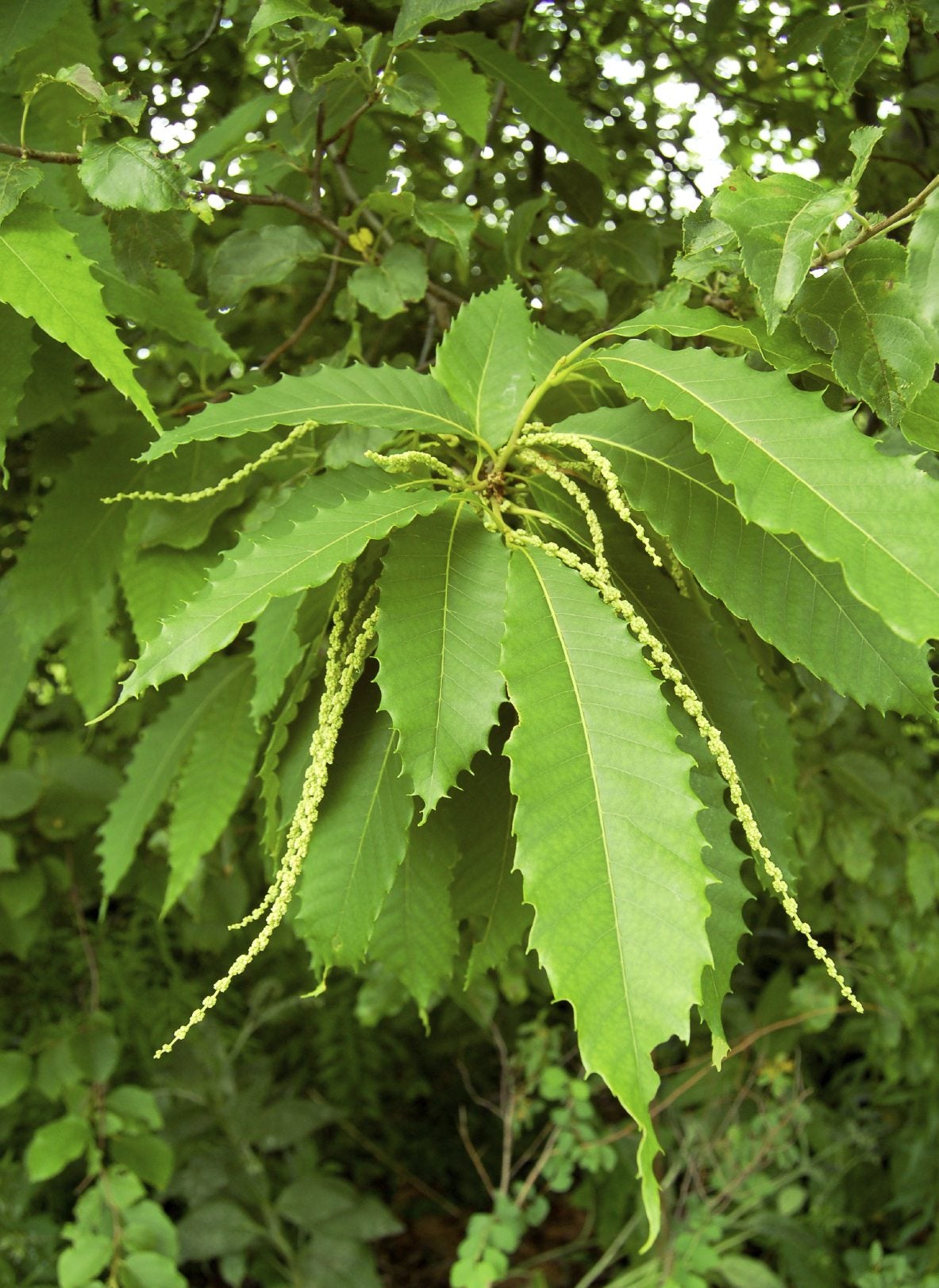American Chestnut Tree Information – How To Grow American Chestnut Trees


Chestnuts are rewarding trees to grow. With beautiful foliage, tall, strong structures, and often heavy and nutritious nut yields, they’re a great choice if you’re looking to grow trees. Planting American chestnut trees can be tricky though. Keep reading to learn American chestnut tree information and how to grow American chestnut trees.
Planting American Chestnut Trees in Landscapes
Before you go about planting American chestnut trees (Castanea dentata), you should have a little American chestnut tree information. American chestnut trees used to be found all over the eastern United States. In 1904, however, a fungus all but wiped them out. The fungus is difficult to manage. It can take ten years to appear, at which time, it kills the aboveground part of the tree. The roots survive but they store the fungus, meaning any new shoots the roots put up will experience the same problem. So how can you go about planting American chestnut trees? First of all, the fungus is native to the eastern United States. If you live elsewhere, you should have better luck, although it’s not guaranteed the fungus won’t also strike there. Another option is to plant hybrids that have been crossed with Japanese or Chinese chestnuts, close relatives that are much more resistant to the fungus. If you’re really serious, the American Chestnut Foundation is working with growers both to fight the fungus and to form new breeds of American chestnut that are resistant to it.
Caring for American Chestnut Trees
When you decide to start planting American chestnut trees, it’s important to begin early in the spring. The trees grow best when American chestnut tree nuts are sown directly in the ground (with the flat side or sprout facing down, half an inch to an inch (1-2.5 cm.) deep) as soon as the soil is workable. Pure varieties have an extremely high germination rate and should grow fine this way. Some hybrids don’t germinate as well, and can be started indoors. Plant the nuts as early as January in pots at least 12 inches (31 cm.) deep. Harden them off gradually after all threat of frost has passed. Plant your trees in very well drained soil in a spot that receives at least six hours of light per day. American chestnuts can’t self-pollinate, so if you want nuts, you need at least two trees. Since the trees are a many year investment and don’t always make it to maturity, you should start out with no fewer than five to ensure that at least two survive. Give each tree at least 40 feet (12 m.) of space on every side, but plant it no farther than 200 feet (61 m.) from its neighbors, as American chestnuts are pollinated by the wind.
Sign up for the Gardening Know How newsletter today and receive a free copy of our e-book "How to Grow Delicious Tomatoes".

The only child of a horticulturist and an English teacher, Liz Baessler was destined to become a gardening editor. She has been with Gardening Know how since 2015, and a Senior Editor since 2020. She holds a BA in English from Brandeis University and an MA in English from the University of Geneva, Switzerland. After years of gardening in containers and community garden plots, she finally has a backyard of her own, which she is systematically filling with vegetables and flowers.